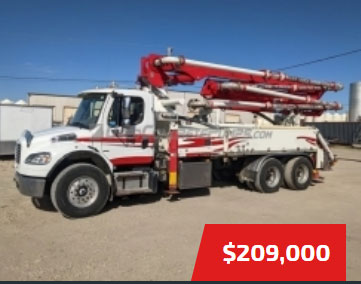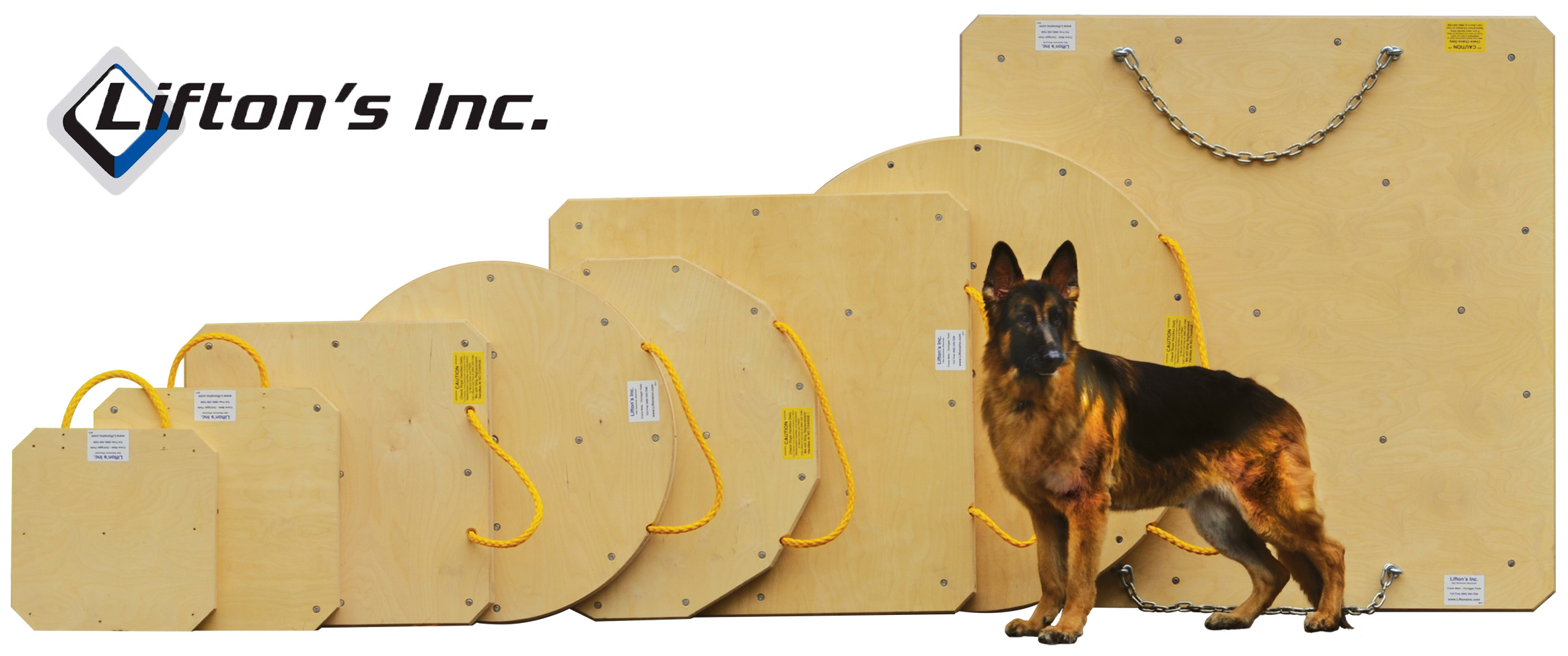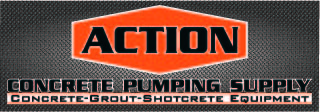| ice | 11-14-2008 | comment profile send pm notify |
|
|
||
| ice | 11-14-2008 | reply profile send pm notify |
|
Steady is all I can say,not setting the world on fire.... |
||
| TooTall | 11-14-2008 | reply profile send pm notify |
|
Tell your operator to get Off the pump so he can see whats going on! Unless he's hard-wired we dont have to do that any more. And If thats you!........Look-Out! Ha ha ha... |
||
| ice | 11-15-2008 | reply profile send pm notify |
|
TooTall, no it isn't me but we are just a bunch of lazy pump freaks..HA HA Ha.... |
||
| WHO?? | 11-15-2008 | reply profile send pm notify |
|
That's pretty nice cribbing you got there...except I would have turned it towards the pour .Just my opinion I always feel better with it long ways towards to pour.My little mind thinks the "mechanical advantage" is better that way . Other than that I really dig that pump and you always have some bad@$$ pictures!! |
||
| Bob | 11-15-2008 | reply profile send pm notify |
|
I like the way it is in this pic. Either way you put it you have the same # of square inches; this way they are the furthest away from the excavation which gives you a better chance of keeping it painted side up
|
||
| WHO?? | 11-16-2008 | reply profile send pm notify |
|
Excavation?? looks flat to me maybe I am missing something,And SQ inches are the same but the way the weight is transferred through the "ties" is DEF different,Not wanting to start a debate with ya BOB I stand NO CHANCE in that battle but you know what I am talking about with the weight transfer yeah |
||
| Vasa | 11-16-2008 | reply profile send pm notify |
|
I am maybe wrong but I am with WHO in this issue.... But I maybe learn something from this disscusion ! |
||
| Bob | 11-16-2008 | reply profile send pm notify |
|
When I set up next to a hole I run the dunnage to parallel the hole, not point toward it. Quite frankly, I don't REALLY know if it matters. I have it stuck in my head that I am better off. Your way 1/2 of it is closer and1/2 is further away from the hole. I have not one bit of factual basis for my choice. Convince me your way is better, you may be able to teach me something; someone manages to do that every day ;~) |
||
| Vasa | 11-16-2008 | reply profile send pm notify |
|
I Think this way Bob , I will us metric when I do the math... In Your "case" Bob , I think they look like 7"X7" and 9´ long If the excavation giveaway so the dunnage nearest of the excavation get lost 7" you (Bob) lose 1/4 of the area but if they laying the other way you loose area under 4 of the dunnage 7" X 7" X 4 1" = 2.54 7" = 17.78cm 1´= 30.48cm 9´= 274.32cm
Whole area = 17.78 x 274.32 x 4 = 19509.638 cm2 And if You (Bob) lose 1 of the dunnage nearest the excavation You have left 3/4 of the dunnage... 17.78x274.32 x 1 = 4877,4096 x 3 = 14632.229
But if You lose 7" on the end of the dunnage (same area 19509.638 cm2) you lose less area.... 17.78 x 17.78 x 4 = 1264,5136 Who and I has 18245.124 cm2 left of the dunnage and You (Bob) has 14632.229 cm2 .... It is a different by 18245.124 cm2 - 14652.229 cm2 = 3592.895 cm2 3592.895 cm2 is maybe the different if some one dies.... Do You understand what I mean ? |
||
| Bob | 11-16-2008 | reply profile send pm notify |
|
Yes, I do. Good explanation. My thought/reasoning is this. I am spreading the downforce over a greater linear length of the excavation; that is to say, where you have the force on 2 feet of the circumference of the hole, and are closer to the edge..... I am utilizing twice the length of the circumference- and am further from the edge. By doubling the length of bearing along the excavation as well as moving the pressure further from the hole; I feel like I have the better case |
||
| Vasa | 11-16-2008 | reply profile send pm notify |
|
Thank You Bob ! My head is so full of nr and formulas after one week in the schoolbench , Concreteclass II so I am allowed to mix concrete , and do mixdesigns...and 2 too go !
|
||
| Bob | 11-16-2008 | reply profile send pm notify |
|
As to "how the weight is transfered" If the dunnage material is up to the task [as this material is] the weight is the same everywhere on the surface of the dunnage material......... which is the point of using material that is up to the task. When you see bowing or bending of the material you have a condition of uneven loading----- which is the beginning of a failure. Whether it ultimately fails COMPLETELY is up to the pump gods and the material under the loaded dunnage. A correctly supported load is able to maintain a flat plane [unbent] as it supports the load. That is what we are after! ALWAYS ;~) |
||
| Bob | 11-16-2008 | reply profile send pm notify |
|
I worked on some crusher spreads to gain an understanding of the aggregate. I know that concrete design is above my head. Congratulations on your continued education ;~) |
||
| WHO?? | 11-16-2008 | reply profile send pm notify |
|
Let me see if my simple minded self can explain what I mean... The weight of the Boom is coming from the Turret and is transferred towards the out rigger in approximately a 45 degree angle so by having the dunnage running parallel to the pour rather than perpendicular to it the weight seems to me that it would be transferred right past the edge of the dunnage putting a lot of force on the extreme outside of it.Where if the dunnage is at an approximate 90 degree's to the pour The weight would be transferred out towards the end of it and therefore better absorbed by the dunnage out past the outrigger foot.....I dunno just the way I see it.AS for the "excavation" part I cant see it in these photos but I have a CHEAP @$$ laptop so maybe I cant see it in this case Like I said it looks flat to me didn't mean to get this much started I was just saying "How I think is best for ME" the set up in question is BY FAR more than adequate so In no way was I trying to bash any one !!!
|
||
| Bob | 11-16-2008 | reply profile send pm notify |
|
Except, with a level pump set-up, the load is DOWN the vertical cylinder. If the load was at some 45 degree angle we would build a dam, not a pad. |
||
| Bob | 11-16-2008 | reply profile send pm notify |
|
WHO, Just a guess on my part, but it is that better than 50% of pump operators really have no idea why they need dunnage. The fact that you have an opinion on which way it should be laid out shows that you have given the subject more than a little thought. Thanks ;~) |
||
| typesdubs | 11-16-2008 | reply profile send pm notify |
|
Load is vertical in the outrigger, doesn't matter which way the dunnage faces, still the same surface area. |
||
| Bob | 11-16-2008 | reply profile send pm notify |
|
Right, The only decision you get to make is "which area" is under those square inches vis-a-vis the direction of the layout. |
||
| TooTall | 11-16-2008 | reply profile send pm notify |
|
I have seen one too many pumps with their hopper 8 feet in the air! It has happened to me...(Twice!!) In both cases the dunnage began to sink unevenly, the outrigger slipped and the pump followed! With Gods grace I was able to finish (both) jobs??? Ever since I have distributed weight "twards" the pour, rather than paralell with pump. This way if the ground fails and pad sinks there is somewhere for the outrigger to go rather than in the dirt!! The job above the ground and area looks fine. I would also bet there is soldier piles or is soil-nailed behind that plywood??? |
||
| Bob | 11-16-2008 | reply profile send pm notify |
|
I have tried my best. Do whatever makes you happy. Please be careful ;~) signed, the guy that never had his hopper 8 feet in the air |
||
| Bob | 11-16-2008 | reply profile send pm notify |
|
OH NO MR. BILL !!! THESE GUYS HAVE THEIR DUNNAGE THE WRONG WAY !!!AAAAAAAAAAAAHHHHAAA
|
||
| pudg | 11-18-2008 | reply profile send pm notify |
|
dunnage school for cranes always says to lay opposite the way he has it ,where if the ground gives you have the length not the width of each dunnage working for you,I have never seen it make much a difference but yall got technical,in my book good setup Ice ,lots better keep pumpin |
||

























.jpg)
.gif)

.jpg)









.jpg)








